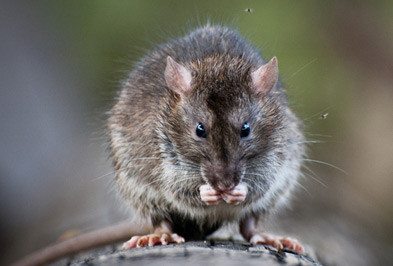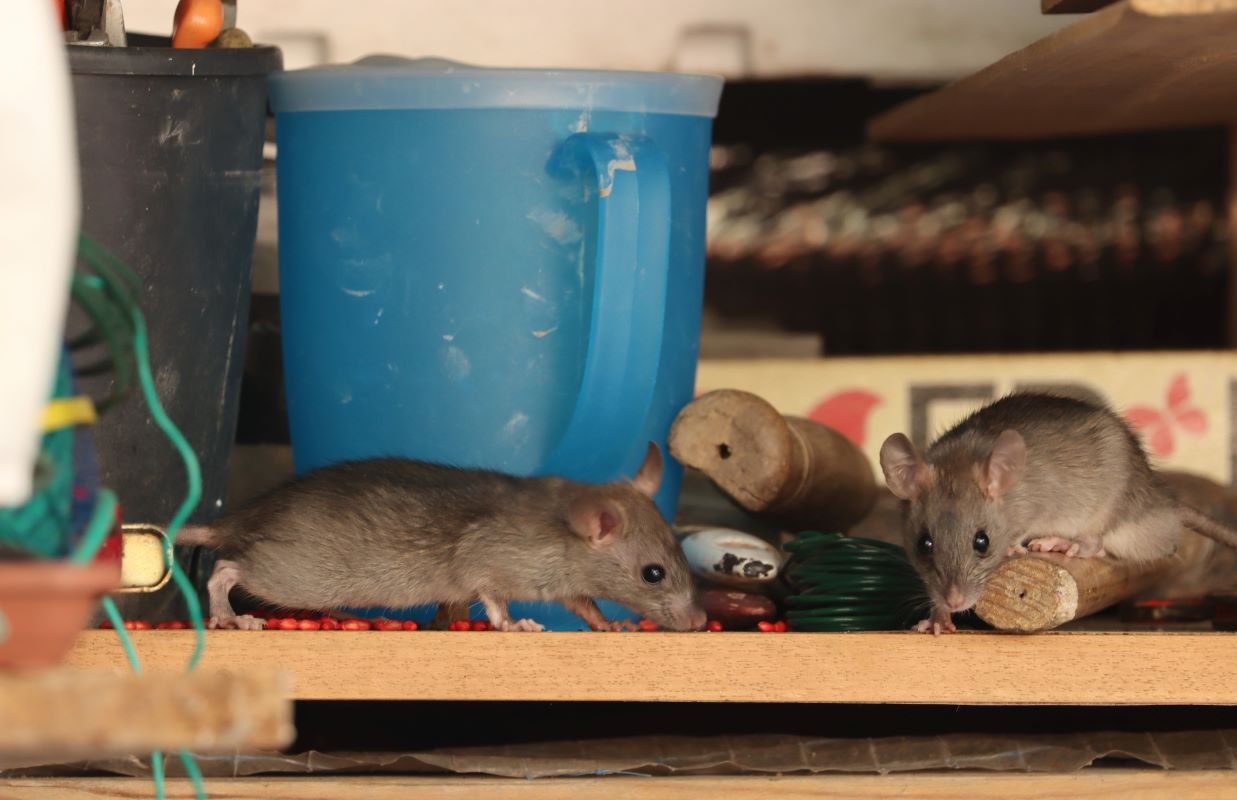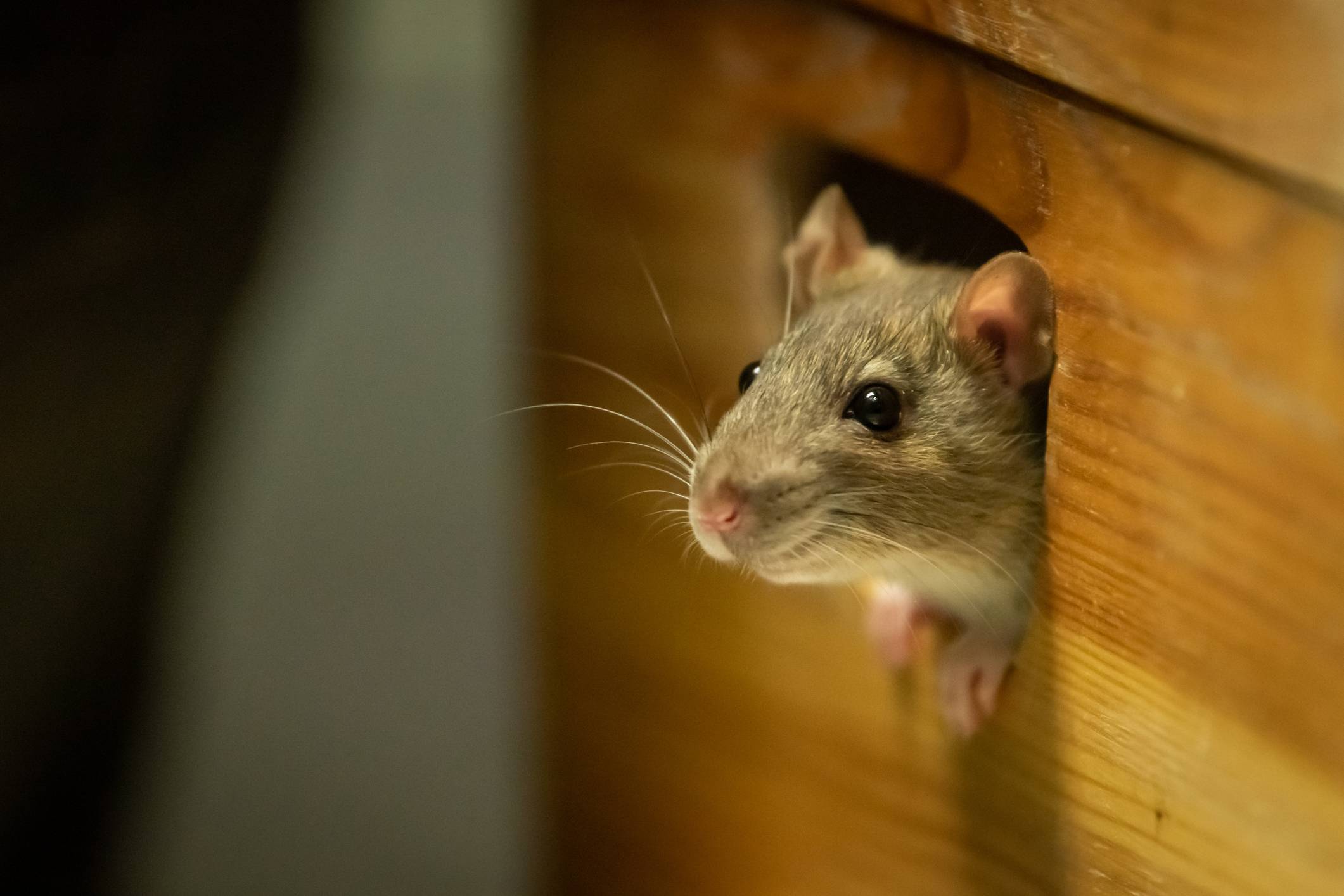Ratsdeveloper2021-06-25T08:04:17-05:00
Rats
Rat Characteristics
Characteristics: As rodents, rats are characterized by their long tails, commensal nature, and teeth that do not stop growing. Their penchant for chewing to file these teeth down are the source of many problems.
Size: Varies by breed of rat.
Danger Level: Dangerous. In addition to food contamination and property damage, rats transmit diseases through their droppings and urine. They can also bite and spread fleas and mites that live in their fur.
What are rats?
The two rat species commonly found throughout Wisconsin, roof rats and Norway rats, are rodents known for “sharing the table” with humans, although they are the only ones benefiting from the relationship.
Roof rats are known for having smooth brown fur, pointed noses, and a tail that extends anywhere from seven to ten inches. Roof rats are known for living in the upper parts of structures. They tend to build their nests in attics and around ceilings/the roof.
Norway rats are a burrowing species of rats with coarse, shaggy brown hair. These rants have blunt noses, capsule-shaped droppings, and tails that measure six to eight inches in length.
Telltale signs of rat infestations include gnaw marks, droppings, grease trails, burrows, and rubbings along walls or baseboards.
Are rats dangerous?
Rats are dangerous precisely because of their penchant for damaging property as well as transmitting disease. Their constantly growing teeth must be filed down, and that usually occurs when they chew on objects around your home. Wires, furniture, and cardboard food containers are among the most damaged items. This can often create fire hazards throughout your home.
In addition, rats can transmit diseases via their droppings and urine, as well as from parasites that live in their fur.
How do I get rid of rats?
Rats are shy and fast-moving pests, which is why we recommend a professional rat control service from Wil-Kil. Our service includes all products and techniques to not just eliminate your rat problem, but to keep them from returning.
Can I do it myself?
Getting rid of rats is complex and requires a lot of time and energy. Buying pesticides and trying to do it yourself can often be dangerous, because pesticides may be more harmful to people and pets than they are to rats. Take care when trying to apply your own pesticides, because misusing or mixing them improperly can be very dangerous.
Are your rat treatments safe?
We take the utmost care to use the least amount of material possible when resolving your rat problem. Our natural products, baits, and mechanical means of treatment are employed as often as possible. If conventional treatments are required, we follow the strictest guidelines and do our best to ensure it poses no threat to people, pets, or plants.
How can I prevent rat problems in the future?
The best way to prevent rat problems—among other pest issues—is a regular pest control service from Wil-Kil Pest Control. In addition to eliminating rat issues, we’ll inspect your property and thoroughly uncover any conditions that may lead to rats (or other pests) in the future. We will also provide regular treatment for said pests.
To learn more about rat and rodent control from Wil-Kil, contact us today to schedule your appointment and inspection.
Related Post From Our Blog
developer2023-12-01T10:07:24-05:00December 1st, 2023|0 Comments
Pests of any kind are a pain to deal with. But if you’re dealing with one pest, chances are, there’s more where that came from. As you’re seeking solutions for a mice infestation, it’s important [...]
developer2023-12-01T09:08:36-05:00December 1st, 2023|0 Comments
As winter approaches, commercial establishments face a common and persistent threat – rodent infestations. Rodents, including rats and mice, are notorious for seeking shelter and warmth indoors during the colder months. Not only can these [...]
developer2022-12-19T17:39:26-05:00November 6th, 2022|0 Comments
Winter brings many great things: Blankets, hot cocoa, and snow. However, winter also brings mice and other rodents into your house as they look for food and shelter from the outdoors. Mice hate the cold [...]





